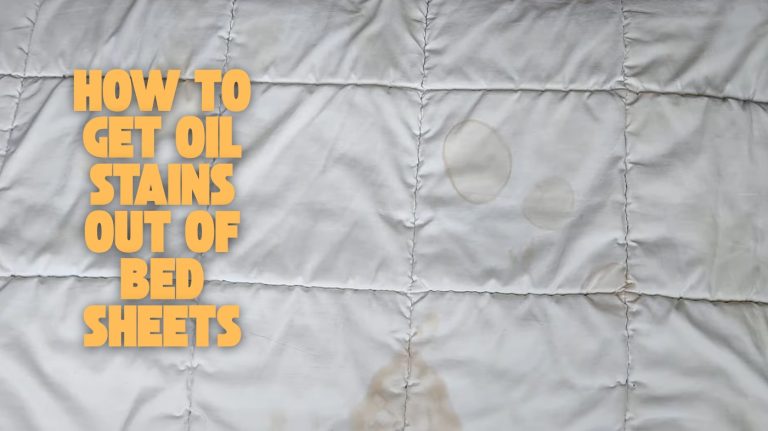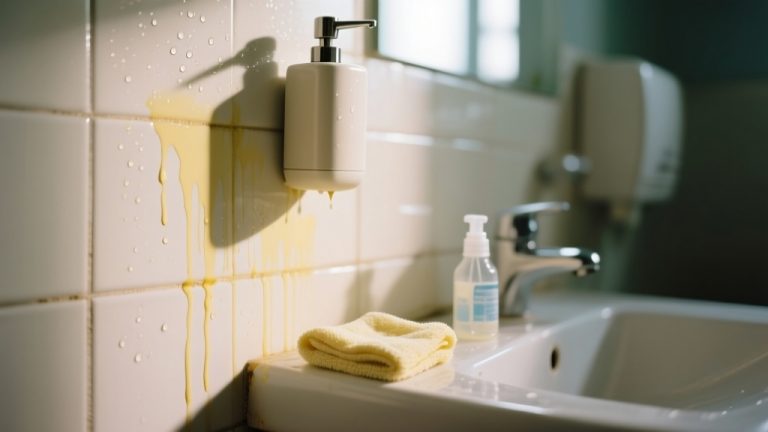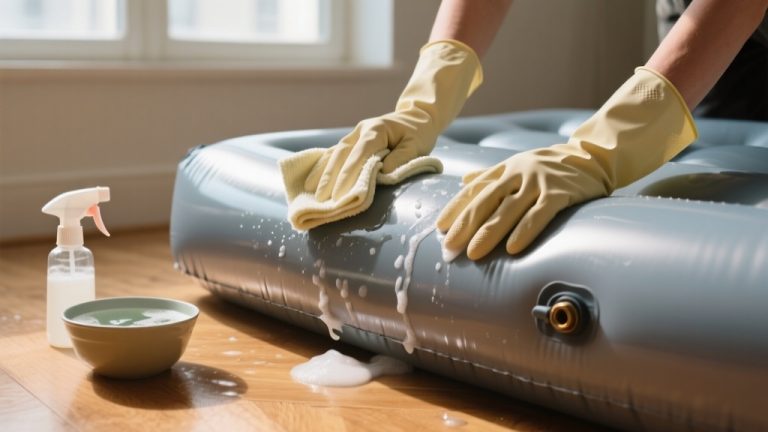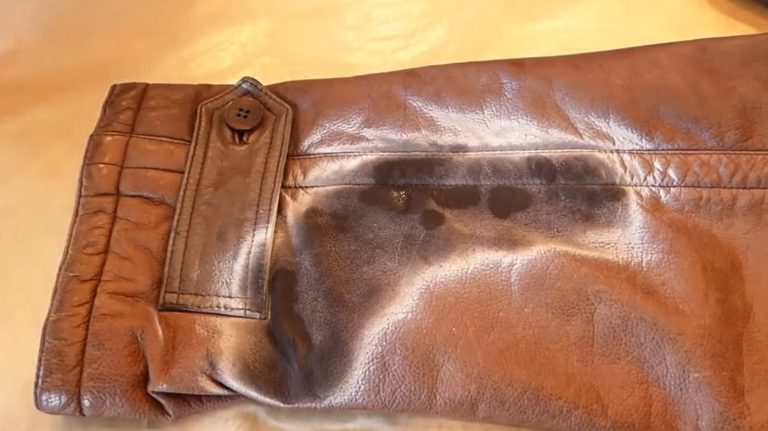Does Boiling Water Kill Drain Flies? What You Should Know?
You can kill many drain fly larvae by pouring boiling water down your drains, as the high temperature causes immediate larval death and helps soften organic buildup.
However, boiling water alone won’t reach eggs or larvae hidden deep in biofilms or remove all debris, so it’s not a complete solution.
Regular use paired with mechanical cleaning and additional treatments increases effectiveness.
Understanding how to combine methods and when to seek further help improves long-term control.
Key Takeaways
- Boiling water kills drain fly larvae on contact and helps soften organic buildup in drains, disrupting breeding habitats.
- It cannot fully penetrate biofilms or remove deep organic matter, limiting its effectiveness alone.
- Combining boiling water with mechanical cleaning and agents like baking soda and vinegar improves larva elimination and drain hygiene.
- Regular boiling water treatments help reduce fly populations but need to be part of a broader control strategy.
- Persistent infestations require professional evaluation, as boiling water alone cannot eradicate all life stages or underlying plumbing issues.
How Boiling Water Affects Drain Fly Populations?
Although boiling water alone won’t completely eradicate drain flies, pouring it down your drains effectively disrupts their breeding cycle by flushing away organic matter and killing larvae embedded in drain biofilms.
This biofilm serves as a vital food source and habitat for larvae development. It is important to note that using water at excessively high temperatures repeatedly may cause damage to plumbing components, so caution is advised.
While boiling water can reduce larvae numbers by penetrating some biofilm layers, it doesn’t fully eliminate the protective matrix, leaving eggs and deeper larvae intact. Repeated treatments are necessary to target these hidden stages, but excessive use risks damaging plumbing.
Boiling water’s impact is primarily mechanical—dislodging debris—rather than chemical. Combining boiling water with agents like baking soda and vinegar can enhance organic matter breakdown and larval mortality.
However, to fix the root cause, it is important to remove the organic buildup known as biofilm that attracts and sustains drain flies. Additionally, maintaining regular maintenance of drains helps prevent excessive buildup that supports fly populations.
For lasting control, integrate boiling water with mechanical cleaning and chemical treatments targeting biofilms.
Comparing Boiling Water and Hot Water for Drain Fly Control
Building on the role of boiling water in disrupting drain fly breeding cycles, it’s important to distinguish how boiling water compares with merely hot water in controlling these pests.
Boiling water, at near 100°C, delivers immediate lethality to larvae and eggs, but volume and contact time critically influence success.
Hot water below boiling helps maintain drain cleanliness but lacks the acute killing power. Regularly running hot water and scrubbing entry points can prevent larvae buildup and improve control effectiveness.
Using biodegradable cleaning agents alongside heat treatments can enhance removal of organic matter that supports breeding.
Boiling water kills larvae instantly, but volume and contact time are key to effective drain fly control.
Both require mechanical cleaning to address biofilm barriers effectively.
- Boiling water kills larvae more effectively on contact than hot water.
- Hot water requires frequent use to reduce breeding grounds.
- Mechanical cleaning enhances water treatments by removing sludge.
- Limited heat penetration reduces efficacy of single boiling water applications.
- Combining physical removal with heat optimizes drain fly control outcomes.
Enhancing Boiling Water Treatment With Baking Soda and Vinegar
You can enhance boiling water’s effectiveness by first applying baking soda, which acts as a mild abrasive to loosen organic buildup.
When followed by vinegar, the resulting chemical reaction produces a foaming action that breaks down debris and targets drain fly larvae.
This combination improves penetration into pipe crevices, making your boiling water rinse more thorough and efficient.
Baking Soda Benefits
A key advantage of using baking soda in drain cleaning lies in its ability to enhance the effectiveness of boiling water treatments.
When applied, baking soda acts as a natural abrasive and disinfectant, loosening debris and neutralizing odors. This combination also helps prevent unwanted corrosion on metal pipes, similar to how unlacquered brass requires careful maintenance to avoid tarnishing.
Following this with boiling water boosts pressure, flushing out loosened materials and providing additional disinfection. This synergy effectively tackles minor clogs and maintains drain health.
To maximize results, adding distilled white vinegar after baking soda creates a fizzing reaction that further breaks down grease and buildup, increasing cleaning power fizzing reaction.
Consider these baking soda benefits:
- Natural mineral compound with disinfectant properties
- Absorbs grease and eliminates odors
- Abrasive action scrubs pipe debris
- Prevents clog formation by dissolving deposits
- Eco-friendly alternative to chemical cleaners
Using baking soda regularly with boiling water creates a cost-effective, non-toxic method for drain maintenance and fly control.
Vinegar’s Role Effectiveness
Although boiling water alone can temporarily reduce drain fly presence by melting fats, oils, and grease (FOG) buildup, incorporating vinegar considerably enhances its effectiveness. Vinegar’s acidity breaks down organic matter that attracts drain flies, reaching grime boiling water might miss.
When combined with baking soda, vinegar creates a fizzing reaction that dislodges debris and kills larvae near the drain surface. This synergy optimizes cleaning, making the method more effective against minor infestations.
However, this treatment targets only the drain’s upper layers and requires regular repetition to prevent re-infestation. Be cautious using this approach with PVC pipes to avoid thermal damage.
Regular maintenance and cleaning are essential to prevent buildup and contamination, similar to how proper cleaning schedules maintain commercial ice machines.
Additional Chemical and Natural Remedies for Drain Flies
You can enhance drain fly control by applying a baking soda and vinegar mixture to break down organic matter in drain surfaces.
This method helps to disrupt the breeding cycles of the flies by removing their primary breeding grounds.
Store-bought drain cleaners offer potent chemical formulations that dissolve deeper buildup where larvae develop, though they require careful use to prevent plumbing damage.
Regular maintenance and cleaning with pH-neutral solutions can also help prevent conditions that favor drain fly infestations.
Additionally, apple cider vinegar traps exploit the flies’ attraction to fermentation, providing a targeted method to reduce adult populations effectively.
Baking Soda and Vinegar
When you pour baking soda into the drain followed by vinegar, a chemical reaction occurs that effectively breaks down blockages and deodorizes the pipe, targeting both adult drain flies and their larvae.
This reaction disrupts larvae and eggs, reducing fly populations. Locating and cleaning all affected drains is crucial because multiple breeding sites can sustain the infestation.
Ensuring proper airflow conditions around drains also helps prevent the buildup of moisture that attracts drain flies.
For enhanced results, combine baking soda with salt before adding vinegar, then let the mixture sit overnight. Flush with hot water afterward to clear debris.
Key points to contemplate:
- The fizzing reaction cleans organic buildup attracting drain flies.
- Use 6% distilled white vinegar for stronger action.
- Salt adds abrasive cleaning, helping remove eggs.
- Hot water flushes away dissolved gunk and dead larvae.
- Regular application with mechanical cleaning improves long-term control.
Store-Bought Drain Cleaners
Since drain flies breed in organic buildup within pipes, store-bought drain cleaners offer targeted solutions to disrupt these habitats.
Chemical cleaners rapidly dissolve organic matter but may damage pipes and incompletely remove larvae sites. Enzymatic cleaners act slower, using bacteria or enzymes to break down fats and debris safely over time, aiding long-term control.
Many enzymatic cleaners are also eco-friendly options that minimize chemical exposure and waste. Combining methods often yields best results.
It is important to note that severe infestations often require treatments that penetrate the entire length of the pipes to fully eliminate the breeding grounds.
| Cleaner Type | Action Mechanism | Pros |
|---|---|---|
| Chemical | Caustic agents dissolve buildup | Fast-acting, effective |
| Enzymatic | Bacteria/enzymes digest debris | Eco-friendly, safer |
| Mechanical (supplement) | Physical scrubbing removes slime | Immediate, chemical-free |
Use enzymatic or chemical cleaners judiciously, paired with mechanical cleaning, to effectively reduce drain fly habitats and minimize reinfestation.
Apple Cider Vinegar Traps
Although apple cider vinegar traps attract many flying insects like fruit flies, their effectiveness against drain flies is limited due to the latter’s preference for organic sludge rather than fermenting fruit odors.
You can make a vinegar trap by mixing apple cider vinegar with a drop of dish soap, optionally covering it with perforated plastic wrap.
However, these traps primarily serve as a monitoring tool rather than a control method. Apple cider vinegar traps work by exploiting the fermentation byproducts that fruit flies are attracted to, but drain flies do not respond as strongly to these fermentation byproducts.
Using an integrated approach that includes mechanical cleaning of drain pipes can significantly improve control efforts.
Consider these points about apple cider vinegar traps:
- Drain flies show minimal attraction to vinegar-based scents.
- Traps catch occasional flies but don’t address breeding sites.
- They’re non-toxic and safe around food, children, and pets.
- Vinegar traps are inexpensive and easy to assemble.
- Use them alongside mechanical cleaning and enzymatic treatments for effective control.
The Importance of Removing Organic Matter to Prevent Drain Flies
Because drain flies rely heavily on decaying organic matter inside drains for breeding, removing this material is essential to controlling their populations.
You need to address the buildup of food scraps, grease, and sludge that form a slimy layer inside pipes, providing ideal conditions for larvae and bacteria.
Using targeted treatments that kill larvae and prevent egg development can enhance the removal process.
Neglected drains with slow water flow exacerbate organic retention, promoting larval development. Slow-moving drains often trap standing water, creating stagnant environments that allow flies to thrive.
Warm, moist environments accelerate decomposition, so eliminating standing water and repairing leaks reduces moisture-dependent buildup.
Physical removal through scrubbing disrupts breeding sites more effectively than chemical methods alone.
Regular maintenance of garbage disposals and prompt plumbing repairs prevent organic accumulation and stagnation.
Incorporating natural enzymes or bio-powders can provide ongoing residual protection against regrowth and infestations.
Combining Multiple Methods for Effective Drain Fly Management
Removing organic matter from drains thoroughly reduces the breeding grounds for drain flies, but tackling infestations effectively requires a comprehensive strategy.
Boiling water alone kills some larvae but doesn’t remove deep organic buildup. You need to combine methods for effective control:
Thoroughly removing organic matter and combining methods are key to effectively controlling drain fly infestations.
- Use boiling water to soften buildup before scrubbing drains with a metal brush to disrupt larvae habitats. Drain flies breed in polluted, shallow water or moist organic solids, so physical removal is essential.
- Apply a baking soda and vinegar mixture, let sit 15 minutes, then flush with boiling water for deeper penetration.
- Consider commercial or biological drain cleaners to break down organic matter in inaccessible areas.
- Fix leaks and eliminate standing water to reduce moisture that supports fly development.
- Use insect sprays to kill adult flies but pair with cleaning methods for lasting results.
This multifaceted approach targets larvae and adults, enhancing overall drain fly management.
Long-Term Strategies for Keeping Drain Flies Away
When you maintain a consistent schedule of drain cleaning and inspection, you considerably reduce the risk of drain fly infestations.
Regularly remove organic buildup using enzymatic cleaners and metal scrub brushes to disrupt larval habitats. Employ drain snaking to clear blockages that trap moisture and organic matter.
Control environmental moisture and eliminate exposed wet organic material to prevent breeding sites. Since moisture and organic debris provide ideal conditions for drain fly breeding, fixing leaks and removing standing water is crucial.
Implement continuous monitoring with natural or UV light traps to detect early fly presence. Incorporate sustainable practices by using eco-friendly and enzymatic products to minimize chemical reliance.
Maintain J traps and flush drains with warm water post-cleaning to ensure free flow and prevent residue accumulation.
By integrating these precise, science-based strategies, you establish a long-term, effective barrier against drain flies, minimizing recurrence and supporting sanitary plumbing conditions.
When to Seek Professional Help for Persistent Drain Fly Issues?
If your efforts to control drain flies through routine cleaning and over-the-counter treatments don’t reduce their numbers, it’s crucial to take into account professional assistance.
Persistent infestations, visible breeding swarms, or underlying plumbing defects indicate a complex problem requiring expert evaluation.
Since drain flies breed rapidly in damp, organic-rich environments, infestations can quickly escalate if not properly addressed.
When routine cleaning fails to control drain flies, professional help is essential to address persistent infestations and plumbing issues.
Professionals conduct detailed pipe inspections to identify exact breeding sites and structural issues contributing to organic buildup and moisture retention.
They apply targeted treatments, including deep cleaning, insecticides, and pipe repairs, to eradicate all life stages of the flies.
Consider seeking professional help if you observe:
- Recurring infestations despite DIY efforts
- Large fly swarms in multiple locations
- Failure of home remedies and insecticides
- Plumbing leaks or cracks
- Rapid population increase or spread
Frequently Asked Questions
Can Boiling Water Damage PVC or Metal Plumbing Pipes?
Yes, boiling water can damage PVC pipes because it exceeds their heat tolerance of around 140°F, causing warping, softening, and weakening the pipe’s structure. Repeated exposure may also degrade PVC joints and release harmful chemicals.
Metal pipes, however, generally withstand boiling water without damage, maintaining integrity and resisting thermal stress.
You should avoid pouring boiling water directly into PVC plumbing to prevent long-term damage and consider safer alternatives for clearing clogs.
How Often Should I Boil Water for Drain Fly Prevention?
Think of boiling water as a spotlight that briefly exposes drain fly larvae hiding in your pipes. You should pour boiling water down drains once or twice weekly for minor prevention.
If infestations persist, increase frequency to daily flushing for up to two weeks, combined with scrubbing or enzymatic cleaners. This routine disrupts organic buildup but won’t fully eradicate larvae alone; consistent, integrated methods guarantee long-term control.
Are Drain Flies Harmful to Humans or Pets?
Drain flies aren’t directly harmful to you or your pets since they don’t bite or sting. However, they can carry bacteria and pathogens from dirty areas, contaminating food and surfaces. This contamination may cause gastrointestinal or respiratory issues, especially if you ingest or inhale it.
For sensitive individuals, they might trigger allergies or asthma. Maintaining good hygiene and plumbing helps minimize these indirect health risks for both you and your pets.
Can Drain Flies Breed in Places Other Than Drains?
Drain flies don’t just dwell in drains; they breed in various moist, moldy, and murky materials. You’ll find larvae lingering in leaky pipes, soggy soil, sewage systems, and stagnant standing water around gutters or garbage.
Indoors, they exploit elevator pits, sump pumps, and wet compost piles. To control these cunning critters, you need to identify and eliminate all damp, dark, organic matter—no matter how hidden or humble the habitat.
What Are the Signs of a Severe Drain Fly Infestation?
You’ll notice persistent sneezing, itchy red rashes, watery eyes, and respiratory issues from severe drain fly allergies.
Physically, you’ll see dense swarms of small, fuzzy flies around drains, often flying out when disturbed.
Larvae appear as tiny white worms in slimy drain buildup, which emits a foul odor. This moist, organic sludge indicates heavy breeding, while frequent fly sightings throughout your living space confirm a severe infestation.
Don’t Let Drain Flies Outsmart You, Go Beyond the Boil
So, you think boiling water is the magic bullet for drain flies? Sure, it can scald a few, but these resilient critters laugh at your lukewarm attempts.
Unless you want to turn your drain into a hot tub party for organic gunk, you’ll need more than just boiling water.
Combine treatments, scrub away the slime, and maybe call in the pros—because science says half-measures only invite more flies to the feast.







